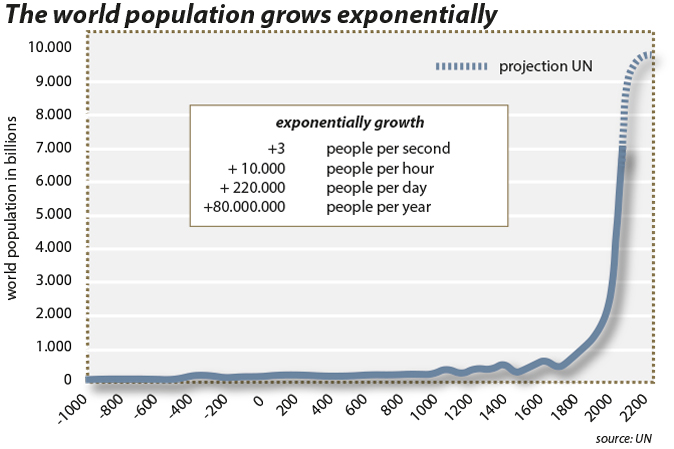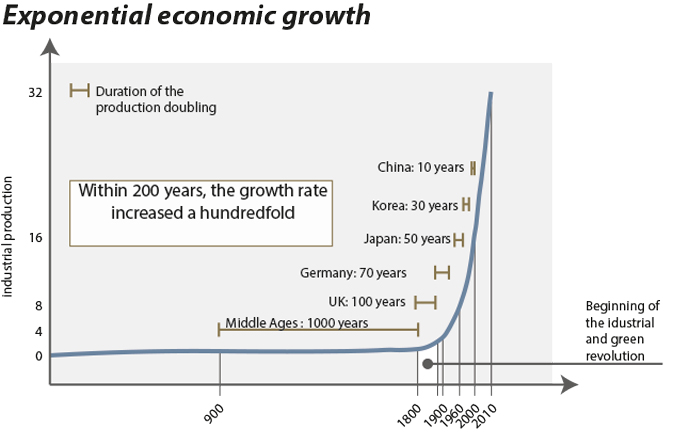True values for your assets
- has reached 7 billion on October 31, 2011
- is projected to reach 8 billion by 2025
- has doubled in 40 years from 1959 (3 billion) to 1999 (6 billion)
- is currently growing at a rate of around 1.15 % per year
- average annual population change is currently estimated at over 77 million
- world population will nearly stabilize at just above 10 billion persons after 2200
- a tremendous change occurred with the industrial revolution: whereas it had taken all of human history up to the year 1800 for world population to reach 1 billion, the second billion was achieved in only 130 years (1930), the third billion in less than 30 years (1959), the fourth billion in 15 years (1974), the fifth billion in 13 years (1987), the sixth billion in 12 years (1999) and the seventh billion in 12 years (2011). During the 20th century alone, the population in the world has grown from 1.65 billion to 6 billion.
Due to the rapidly growing world population, of course, also increases the number of consumers.
Especially in Brazil, Russia, India, China and Eastern European countries the number of users increases rapidly.
Currently Featuring over 60% of the world’s population consumers. This trend leads to an increased demand for raw materials and thus higher prices.




